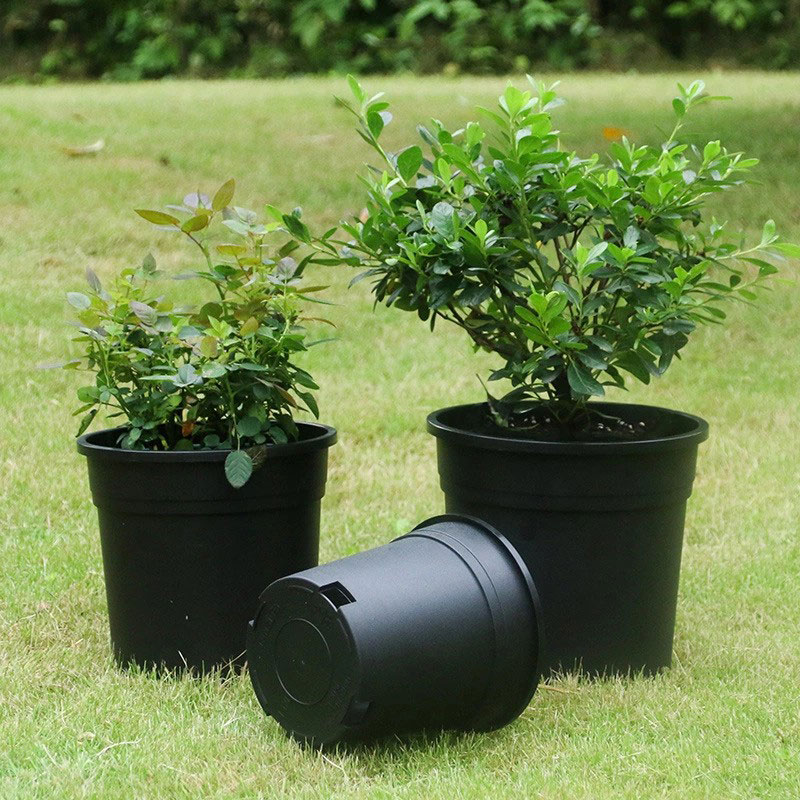Round Nursery Pots: The Essential Choice for Healthy Plant Growth
2025-04-11
When it comes to nurturing plants, choosing the right pot is crucial. For many gardeners, whether professionals or enthusiasts, the round nursery pot has become a go-to choice for cultivating healthy plants. These simple yet highly functional pots are favored for their design, versatility, and practicality. From the tiny seedlings to mature plants, round nursery pots are an essential tool in the gardening world.
What is a Round Nursery Pot?
A round nursery pot is a standard container used for growing and transporting plants. As the name suggests, these pots are typically round in shape, with a uniform cylindrical structure. They are made from various materials, including plastic, terracotta, and sometimes biodegradable substances, but plastic remains the most popular choice due to its lightweight and durable nature. Round nursery pots come in a range of sizes, from small pots for seedlings to larger containers for fully-grown plants or trees.
Why Choose Round Nursery Pots?
1. Even Distribution of Roots: One of the key benefits of round nursery pots is their ability to promote even root growth. The round shape allows the plant’s roots to spread uniformly in all directions, leading to a healthy, balanced root system. This ensures the plant gets adequate nutrients and water from all sides, which is essential for strong growth.
2. Good Drainage: Most round nursery pots come with drainage holes at the bottom, allowing excess water to escape and preventing waterlogging. Proper drainage is crucial for plant health because it prevents root rot and other moisture-related issues. This feature is particularly beneficial for plants that prefer dry conditions and require well-drained soil.
3. Versatility in Planting: Round nursery pots are versatile, making them suitable for a wide variety of plants. From flowers and herbs to shrubs and small trees, these pots can accommodate different species with ease. Whether you’re transplanting young plants or looking for a temporary container to house a blooming flower, the round shape works well for most plants.
4. Stackable Design: Many round nursery pots are designed to be stackable, which makes storage convenient and space-efficient. This feature is especially helpful for nurseries, garden centers, or anyone growing multiple plants. Storing them in stacks saves space and keeps pots organized until they’re needed for planting.
5. Lightweight and Portable: Compared to traditional ceramic or terracotta pots, plastic round nursery pots are lightweight, making them easy to carry and move around. This is particularly useful for gardeners who need to relocate plants or adjust their garden layout frequently. Their portability makes them a practical choice for both home gardeners and professional landscapers.
Common Uses of Round Nursery Pots
1. Starting Seedlings: Round nursery pots are ideal for starting seeds or growing young plants. Their uniform shape and good drainage help establish a solid root system, which is critical for the plant’s growth. Seedlings often thrive in these pots, as they provide ample space for the roots to spread while also ensuring that the plants are not overwatered.
2. Container Gardening: For individuals with limited garden space, container gardening is a popular solution. Round nursery pots are commonly used in container gardening, whether for growing vegetables, herbs, flowers, or small trees. They allow for flexibility in creating a mobile garden that can be placed on balconies, patios, or even inside the house near windows.
3. Transplanting Plants: When transplanting a plant into a larger pot, round nursery pots are often the first choice. They provide ample room for the plant’s roots to expand, offering enough space for future growth. Many gardeners use these pots as intermediate steps before the plants are eventually moved to larger outdoor garden beds.
4. Retail and Commercial Use: Round nursery pots are commonly used by nurseries and garden centers for displaying plants for sale. Their uniformity and stackable design make them ideal for retail environments. Whether it's a vibrant flower display or a selection of houseplants, these pots create an organized and visually appealing presentation.
Tips for Using Round Nursery Pots
1. Choose the Right Size: When selecting a round nursery pot, make sure it’s the right size for your plant. A pot that’s too small will restrict the plant’s root growth, while a pot that’s too large can lead to water retention issues. A good rule of thumb is to choose a pot that’s a few inches wider in diameter than the plant’s current root ball.
2. Ensure Proper Drainage: Always check that the pot has drainage holes. If not, you can drill a few small holes in the bottom. Without proper drainage, water can accumulate at the bottom of the pot, leading to root rot and other issues.
3. Use Good Potting Mix: The type of soil you use is just as important as the pot itself. For best results, choose a well-draining potting mix that’s suited to your plant’s needs. Different plants require different types of soil, so be sure to research what will work best for your specific plants.
4. Repot When Necessary: As plants grow, they often outgrow their pots. Make sure to monitor the plant’s root system. If you notice roots growing out of the drainage holes or if the plant seems stunted, it’s time to repot into a larger round nursery pot.
Conclusion
Round nursery pots are an essential gardening tool, providing a simple and effective solution for growing and nurturing plants. Whether you’re a beginner gardener or an experienced horticulturist, these pots offer numerous benefits, including promoting healthy root development, ensuring good drainage, and being easy to handle and store. From starting seeds to container gardening, their versatility makes them a reliable choice for various planting needs. By selecting the right size, ensuring proper drainage, and using the appropriate potting mix, you can ensure your plants thrive in these practical and affordable pots.



